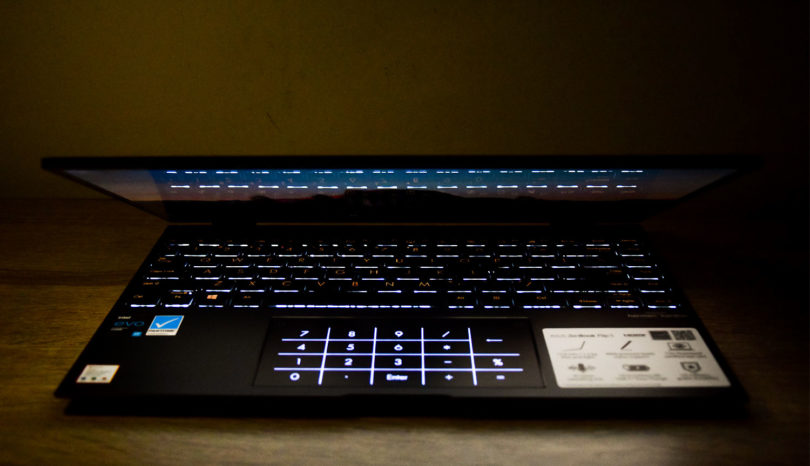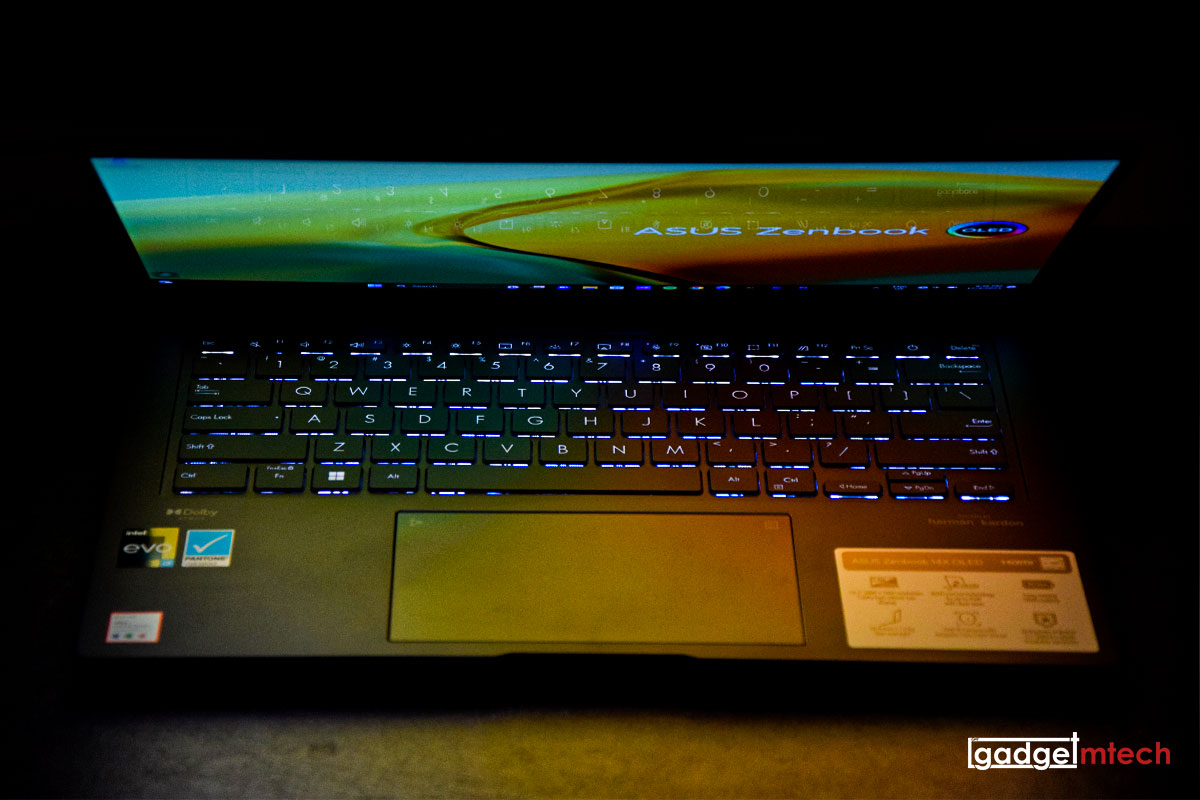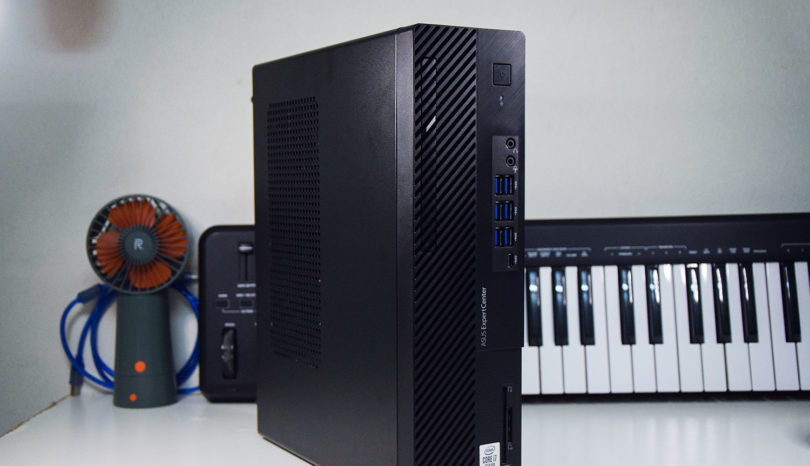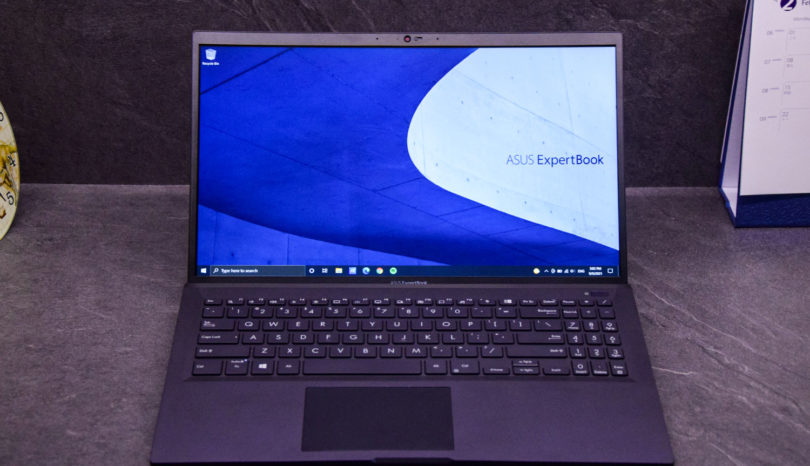Introduction
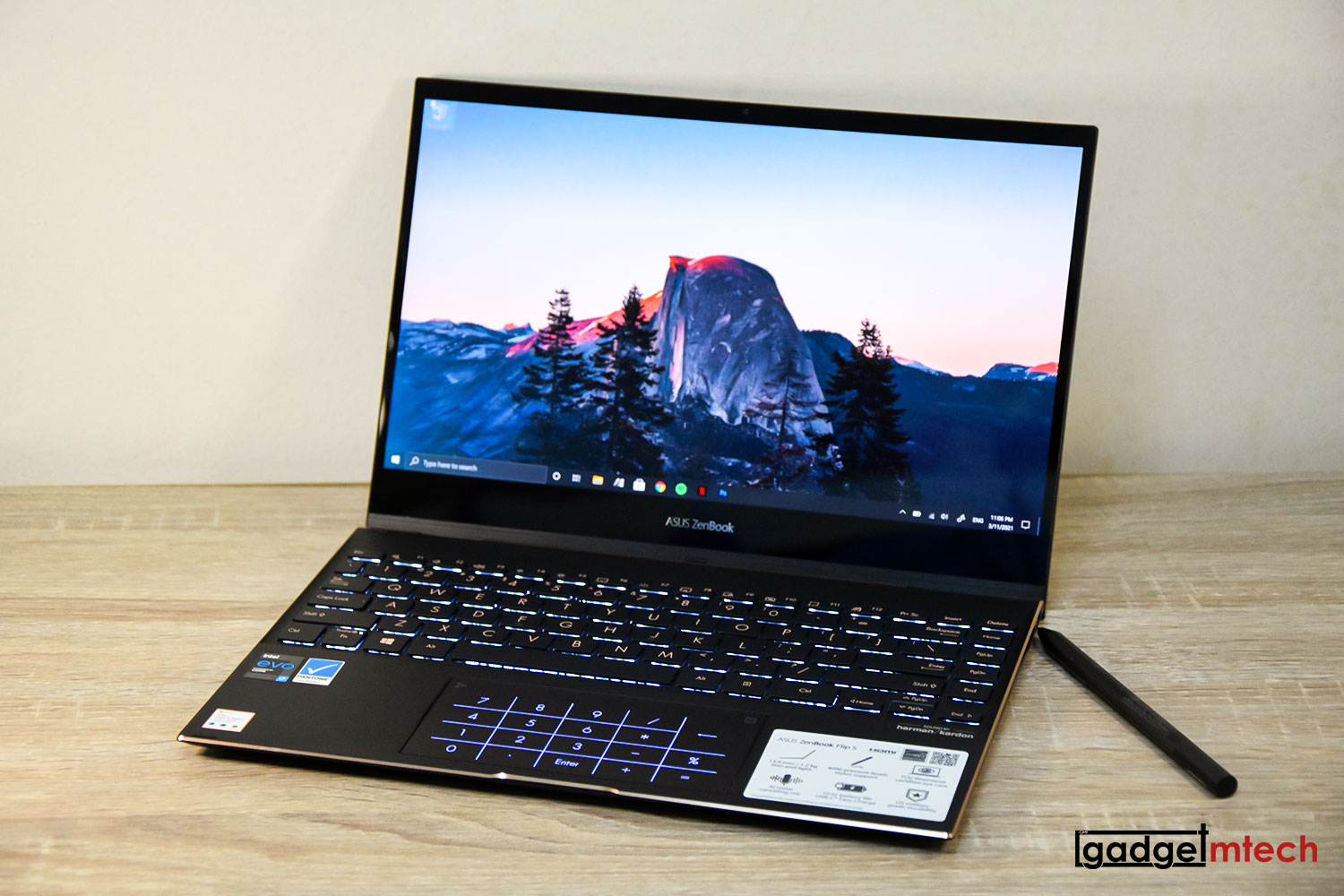
This is the ASUS ZenBook Flip S OLED (UX371), which is the world’s thinnest 13-inch 4K OLED convertible laptop. This claim might be staying for a while since there aren’t many convertible laptops in the market that have an OLED screen. Yup, the OLED screen is quite common in smartphones nowadays, but not on laptops. I’ve been using this laptop for more than a couple of weeks, here comes the full review!
ASUS ZenBook Flip S OLED (UX371) Specs
- 13.3″ OLED 4K UHD 400 nits NanoEdge touchscreen display
- Intel Core i7-1165G7 processor
- Intel Iris Xe graphics
- 16GB 4,266MHz LPDDR4x RAM
- 1TB PCIe NVMe 3.0 x4 M.2 SSD
- WiFi 6 with Gig+ performance (802.11ax), Bluetooth 5.0 (Dual Band) connectivity
- IR webcam with Windows Hello support
- 2 x Thunderbolt 4 USB-C with ASUS USB-C Easy Charge, 1 x USB 3.2 Gen 1 Type-A, 1 x Standard HDMI 2.0
- 67Wh battery
- Windows 10 Home with Office Home & Student 2019 included
- Weight: 1.2kg
- Dimensions: 30.50 x 21.10 x 1.19~1.39cm
Unboxing
View this post on Instagram
Design

You can’t say it’s a ZenBook without the iconic concentric circle design. The ASUS ZenBook Flip S OLED (UX371) has the same off-centered concentric circle design on the lid with Red Copper diamond-cut highlights all over including the ASUS logo. The Red Copper highlights blend well with the Jade Black finish, which makes the laptop looks elegant.

The laptop weighs only 1.2kg and features a profile of less than 14mm, making it easy to carry around. I personally like this form factor as it is easy to carry and fits in my laptop sleeve easily. By the way, ASUS actually included the laptop sleeve in the box, but I prefer my own one.
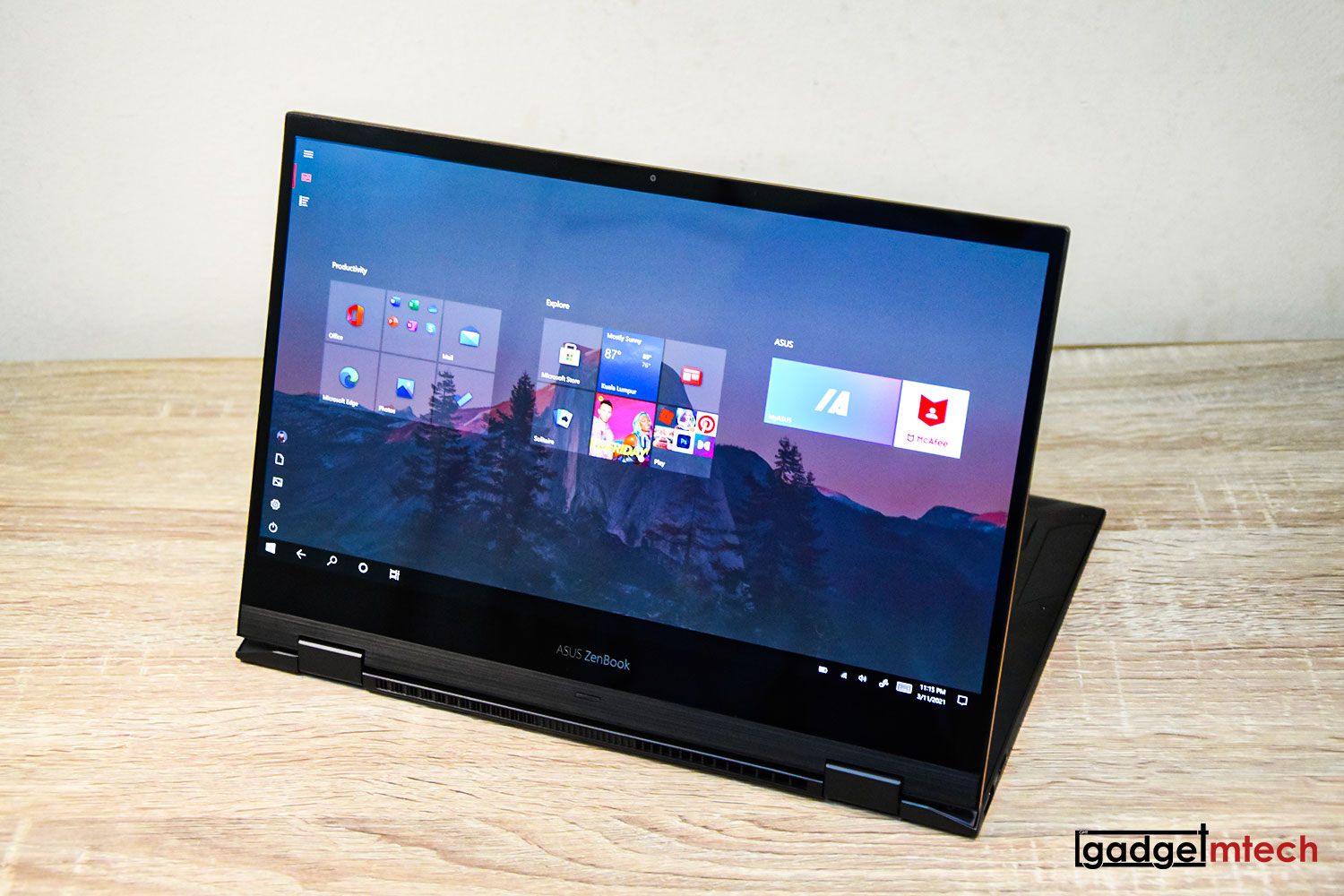
It features a 360° ErgoLift hinge design, which allows the display to be flipped to any position, depending on how you want to use it. The hinge is durability-tested for over 20,000 open/close cycles. When you flip to a certain angle or even rotate the screen orientation, the laptop will automatically switch to tablet mode.
The left side of the laptop houses a full-sized HMDI port, two Thunderbolt 3 USB-C ports, and a battery LED indicator. The right side has a USB 3.2 Gen 1 Type-A port and a power button. It doesn’t have a MicroSD card slot and 3.5mm audio jack, but ASUS did include a USB-C to 3.5mm adapter with a built-in DAC that supports Hi-Res Audio in the box. Since it can switch to tablet mode, I actually prefer it to have a physical volume rocker as well.
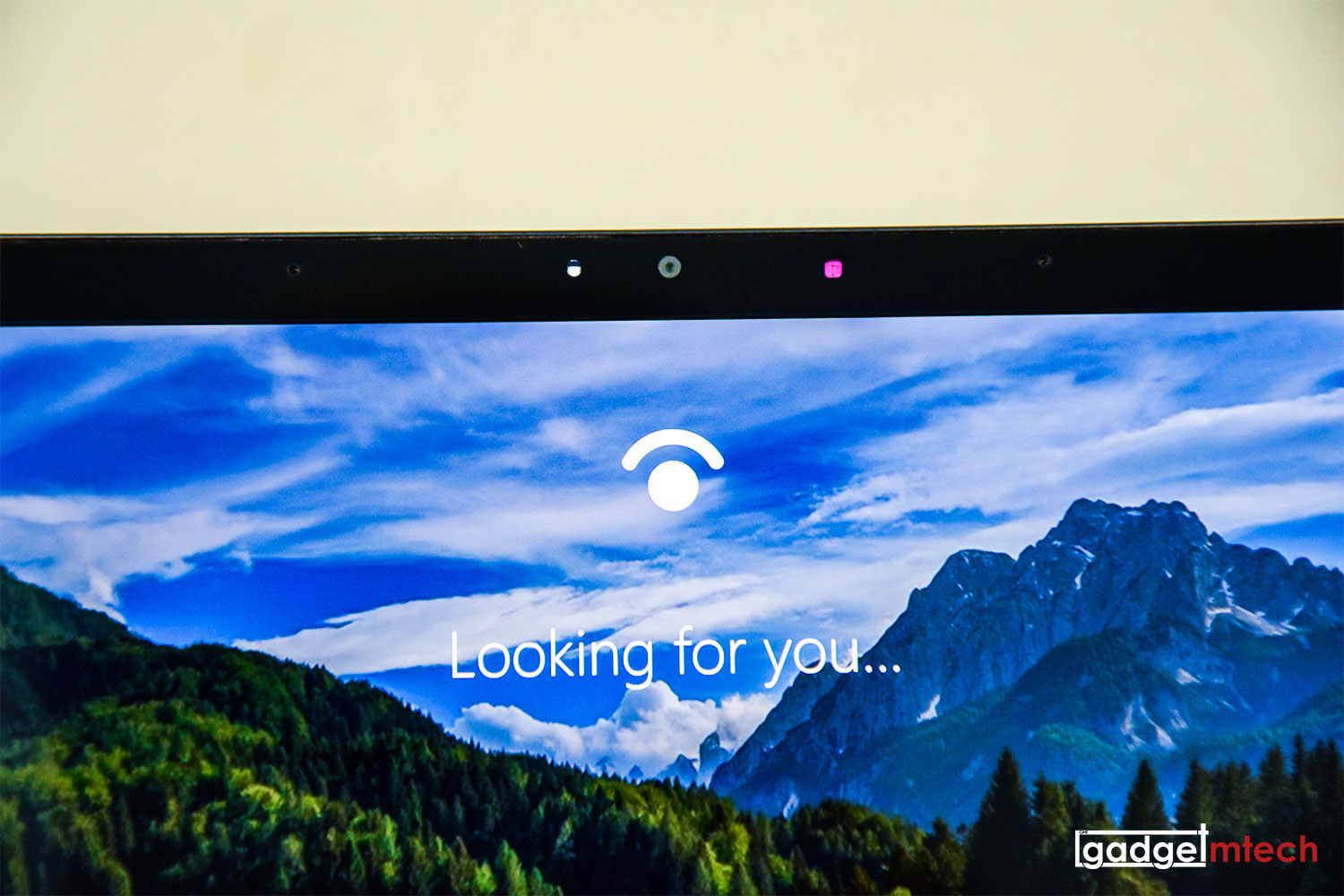
The ZenBook Flip S OLED (UX371) comes with Windows Hello biometric facial recognition feature, which has two IR blasters in between the webcam. One underrated design is ASUS actually covers the screen and bezels with a piece of glass, which is not common for Windows laptops nowadays. Many Windows laptops use plastic bezels, the same material as the cover, and after a while, the screen edges will collect dust, which is frustrating for me. I personally like what ASUS has done with this laptop, and it looks more premium. Just a tiny thing but it matters to me!
Display
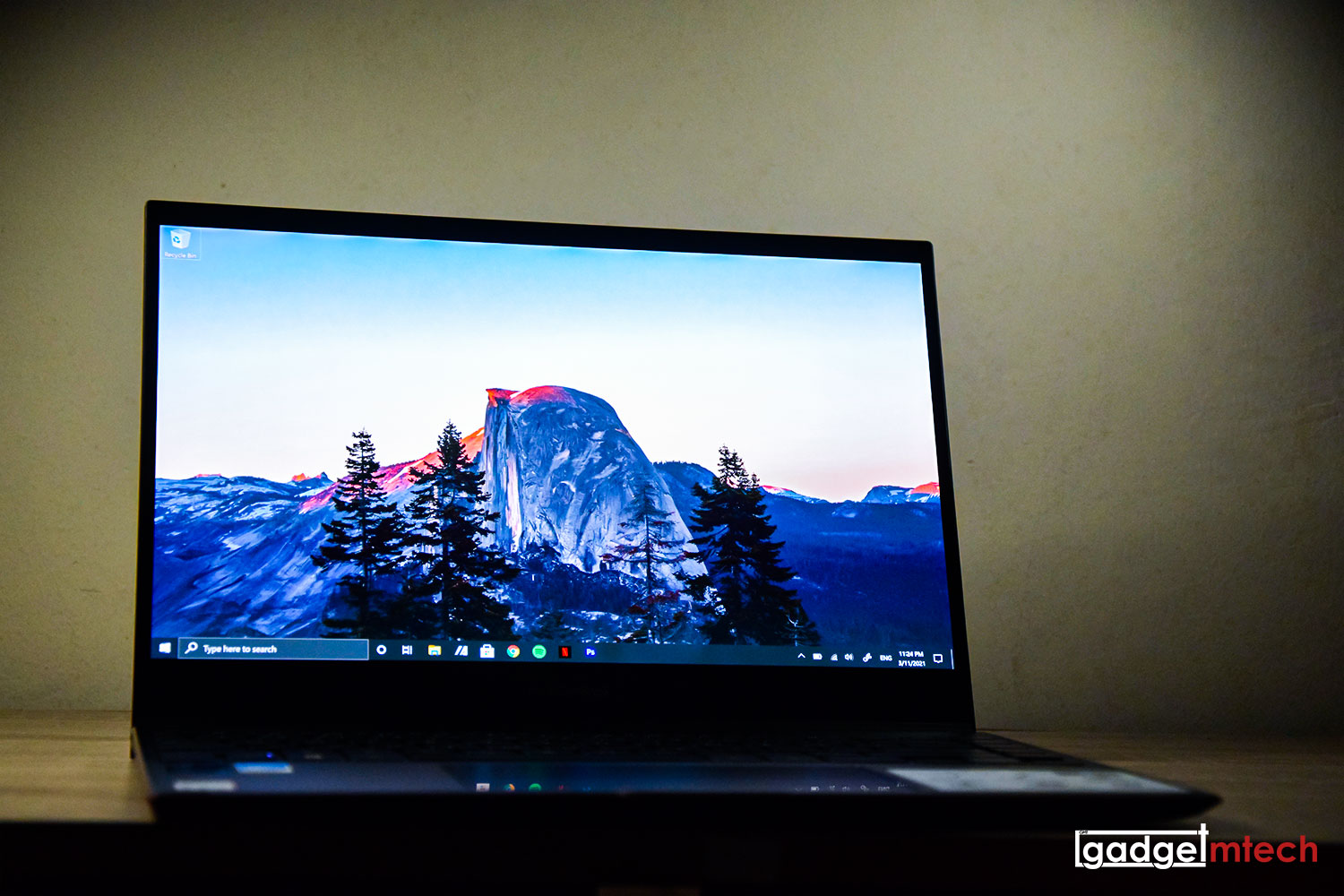
The ASUS ZenBook Flip S OLED (UX371) sports a 13.3″ OLED 4K UHD 400 nits NanoEdge touchscreen display. If you’ve been following the smartphone industry, OLED panel is quite common for many smartphones, especially those high-end phones. OLED panels have deep blacks, thanks to the ability to switch each individual pixel off. According to ASUS, the laptop features a 1,000,000:1 contrast ratio and is certified VESA DisplayHDR 500 True Black, which can support up to 500 nits of highlight brightness and 0.0005 nits of deep black brightness, providing creators with a brighter and more detailed viewing experience.
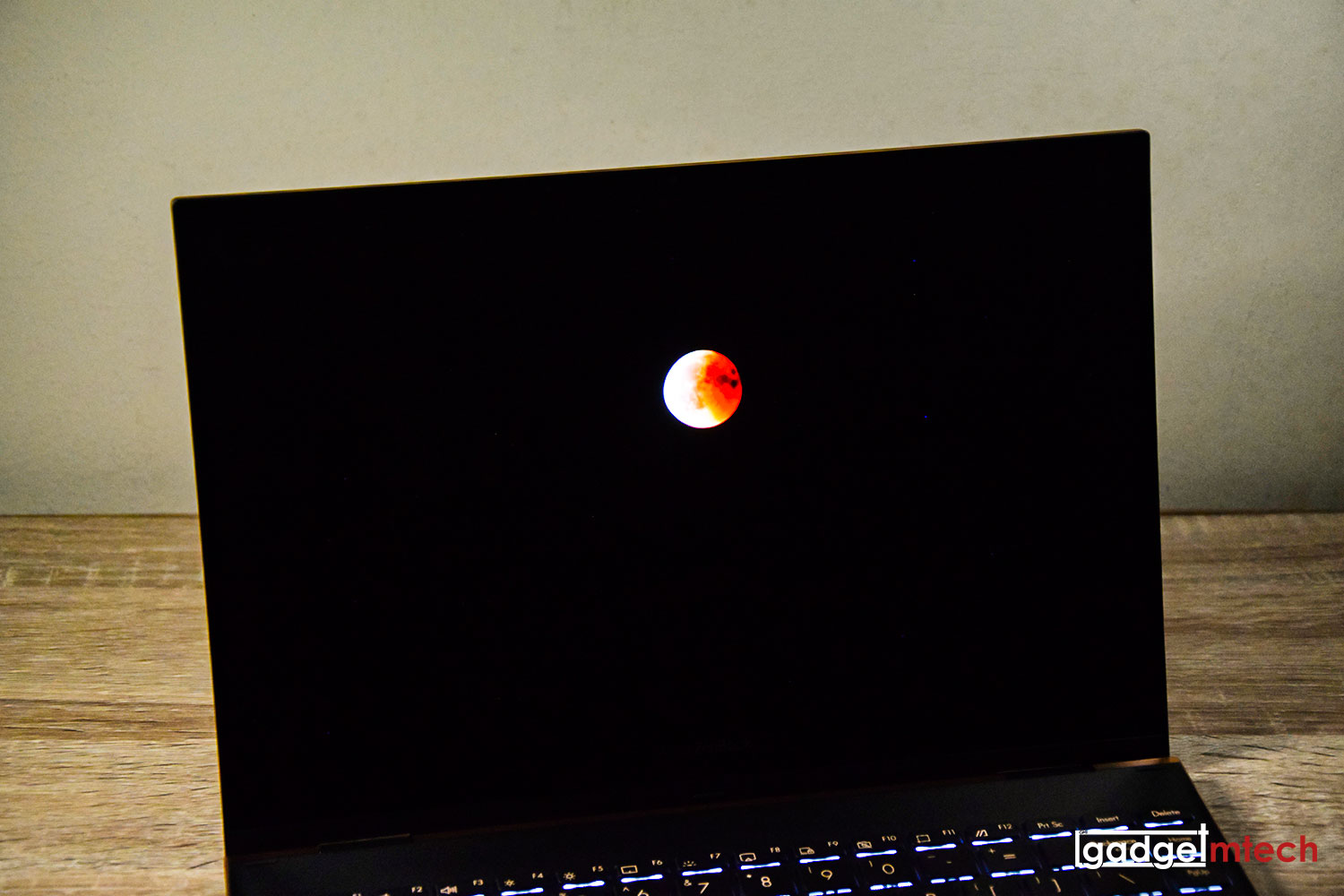
Indeed, the ZenBook Flip S OLED (UX371) has a top-notch display. With the extreme contrast and accurate color reproduction at any level, everything looks crisp and vibrant – even within darker content. This helps with eye comfort, too: you can dial down the brightness, without losing contrast and color vibrancy, resulting in reduced blue-light emission.
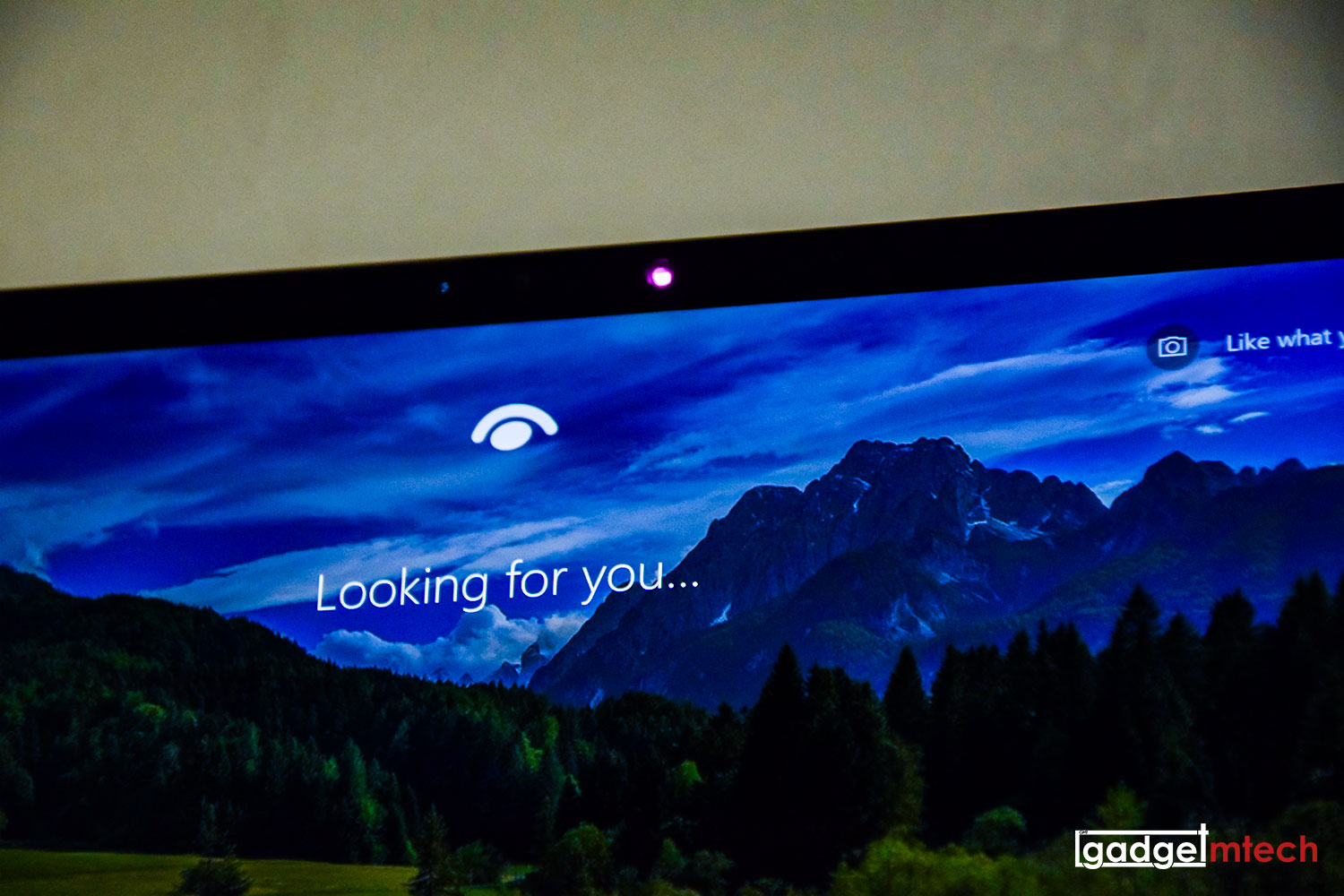
However, I find that having a 4K UHD resolution is a little too much for a 13.3-inch screen. Average consumers will not be able to differentiate whether it is a 4K UHD or Full HD resolution. I also find that setting to 250% scaling is the best for me, not the recommended 300% scaling. Another thing is when the IR blaster is flashing for Windows Hello face unlock, you’ll notice the part of the screen near the IR blaster will also be flashing.
ASUS Pen SA201H

The laptop comes with the ASUS Pen SA201H in the box, which supports 4,096 levels of pressure sensitivity and MPP 2.0 (Microsoft Pen Protocol 2.0). The stylus has two side buttons, one for mouse clicks, one for erase function. Drawing on the screen feels like drawing on a Wacom tablet during my degree days, though I still prefer the overall drawing experience with the Samsung Galaxy Tab S7+, that S Pen experience with an ultra-low latency just feels better, and the pen tip is softer.
Keyboard and Touchpad
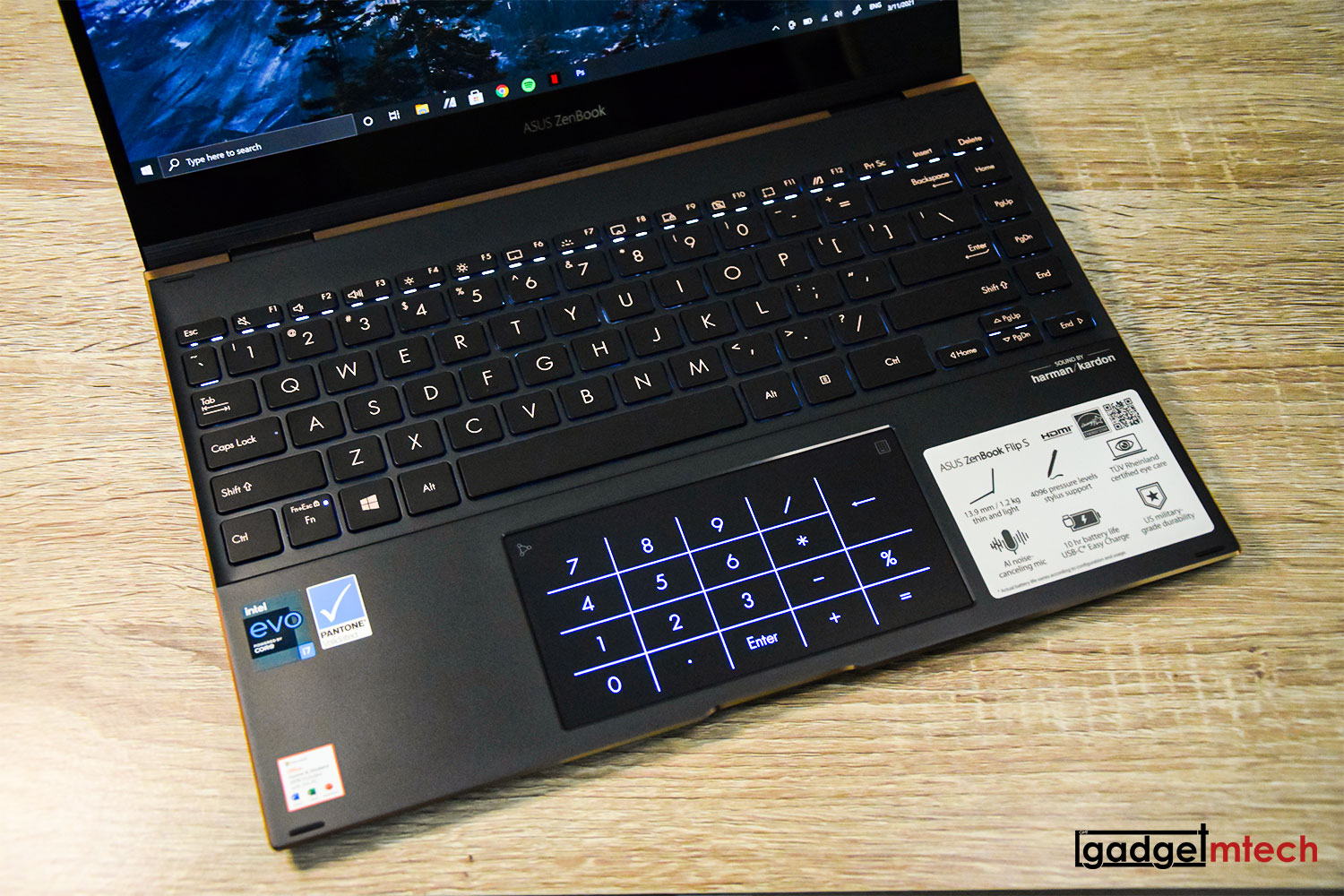
The ASUS ZenBook Flip S OLED (UX371) has an edge-to-edge full-sized backlit keyboard and NumberPad 2.0. Basically, the keyboard and touchpad feel quite similar to the ZenBook 13 (UX325) that I reviewed last year. I wouldn’t surprise if they both share the same keyboard and touchpad since they are both 13-inch laptops. You get the same hotkeys on the keyboard and pressing the “Fn” + “Esc” keys will switch between hotkey functions or general F1-F12 key functions.
As for the NumberPad 2.0, it now only comes with two controls:
- A single-touch sensor at the top-right of the touchpad turns NumberPad on and off
- Swipe from the top left icon in any direction on the NumberPad 2.0 to activate the Calculator app on the main display
Even though it’s the same wide touchpad with Windows precision driver, I did not experience the latency issue on this laptop, seems that it can be fixed via a software update and ASUS has fixed it.
Performance
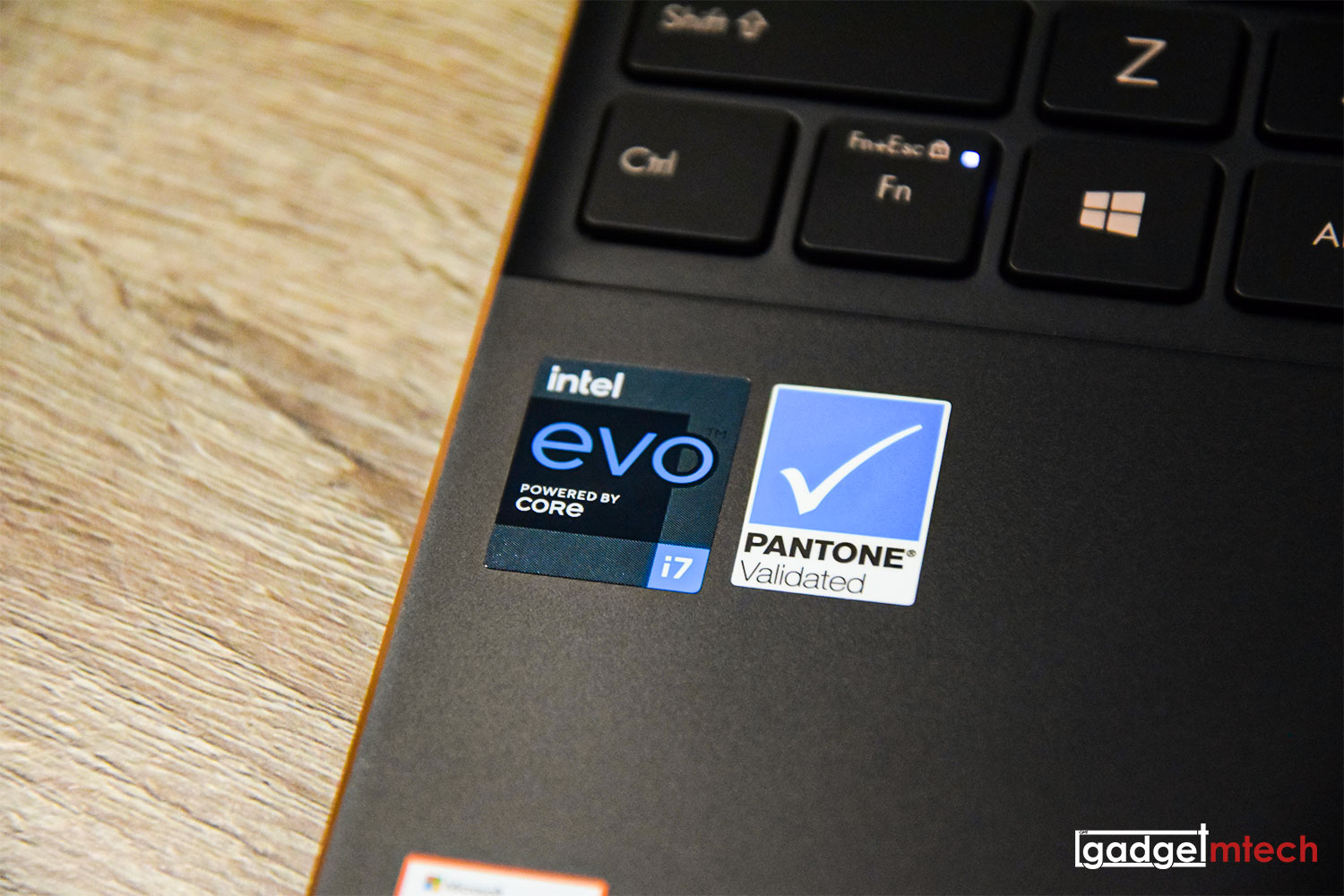
The ASUS ZenBook Flip S OLED (UX371) is powered by the Intel Core i7-1165G7 processor with 16GB 4,266MHz LPDDR4x RAM and 1TB PCIe NVMe 3.0 x4 M.2 SSD, quite similar to the VivoBook S15 S533EA that I reviewed. The fan noise is actually quite loud and it kicks in quite frequently to cool down the laptop, which is a disadvantage of a thin and light laptop since it has limited space to dissipate the heat. If you flip the screen all the way back to use it as a tablet, the fan will not work in tablet mode. In terms of graphics performance, it uses the Intel Iris Xe Graphics, which is comparable to the NVIDIA GeForce MX350 discrete graphics. Playing GTA V at 1080p@60fps on normal settings is not a problem at all.
Software
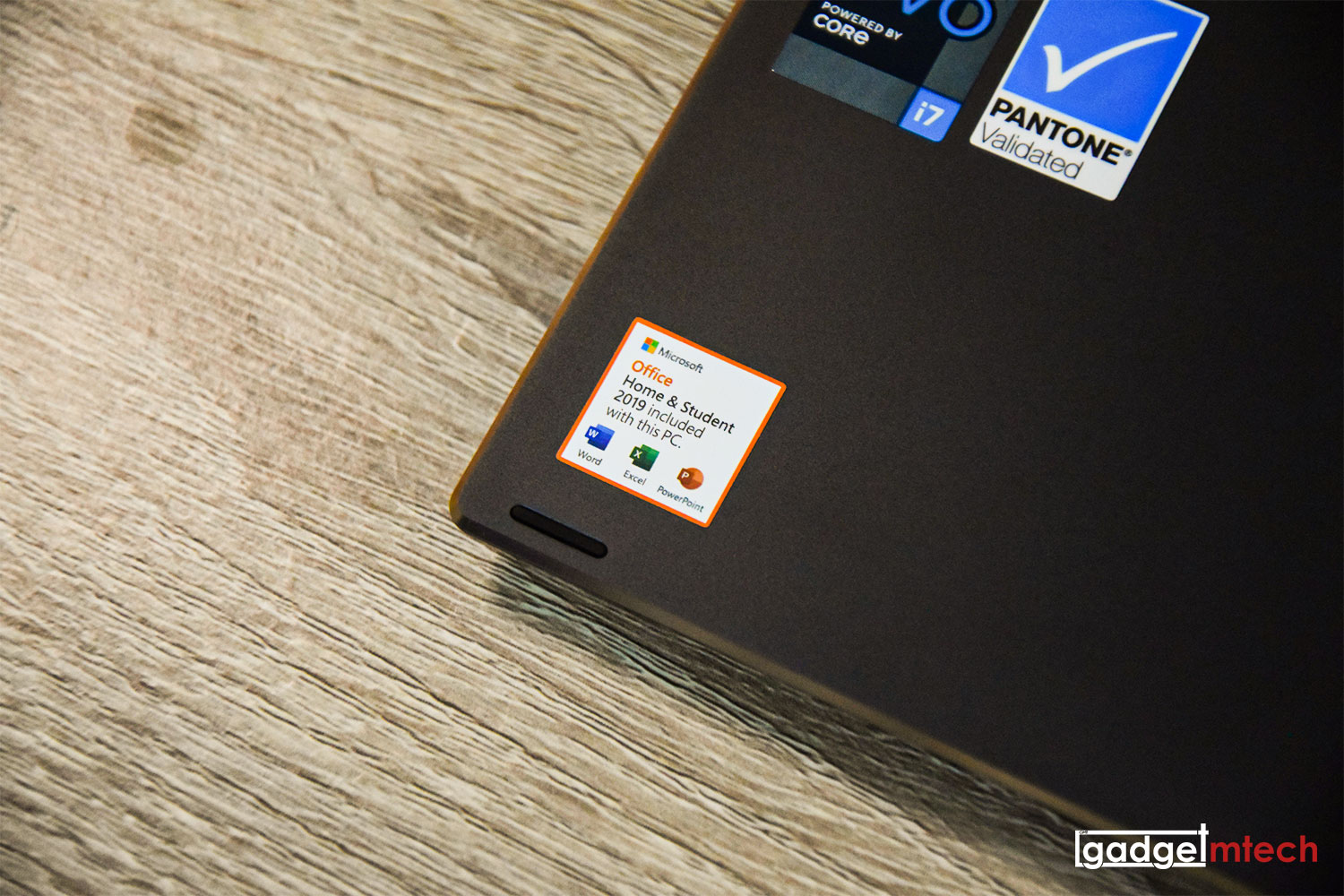
The laptop runs on Windows 10 Home with Office Home & Student 2019 included. Kudos to ASUS Malaysia for including it so that you don’t need to purchase it separately. Plus, a copy of Office Home & Student 2019 will cost you RM529!
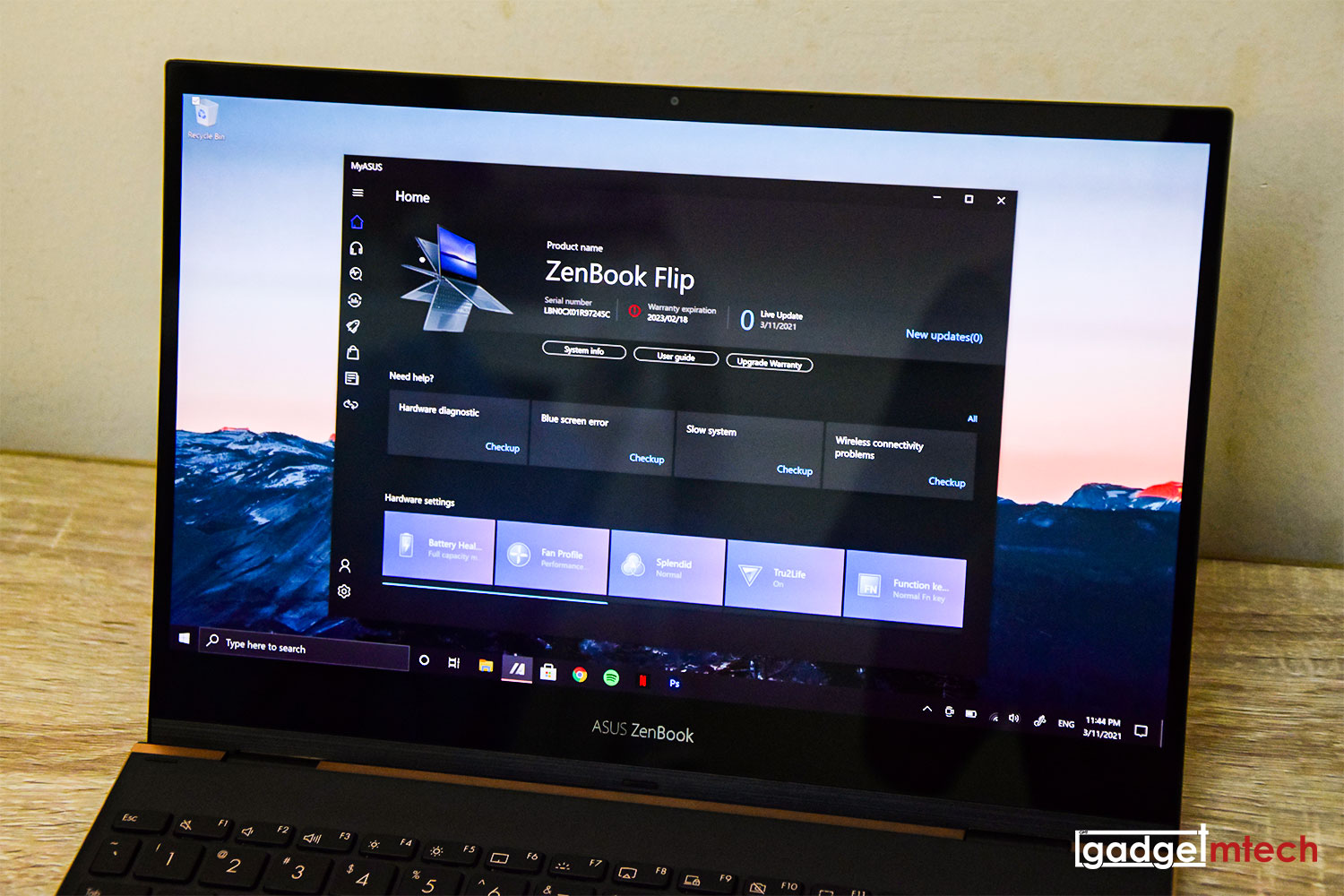
Just like other ASUS laptops, it comes with MyASUS software, which lets you customize system settings such as Fan Profile, ASUS Splendid, ASUS Tru2Life, Smart Wi-Fi, and more. What missing from the VivoBook series is the ASUS Intelligent Performance Technology (AIPT), quite weird since the ZenBook series is actually the higher-end series.
Battery Life

The ASUS ZenBook Flip S OLED (UX371) has a 67Wh 4-cell lithium-polymer battery, which charges from 0% to 60% in just 49 minutes via the Thunderbolt 4 USB-C port. Thanks to the USB-C Easy Charge feature, you can use a wide range of USB-C chargers (5V to 20V) to charge the laptop. It comes with a 65W charger, which is relatively big. Thankfully, I was able to use my UGREEN 65W PD GaN charger to charge it and it works perfectly, which technically replaces the original charger!
ASUS claims that the laptop has up to 10 hours of battery life. Based on my test, I was able to get around 7 hours of battery life by just watching Netflix and YouTube videos, while using it to do web browsing and typing only got me 5 hours of battery life. As for the Zoom conference call, the battery only survived 2 hours, though if you set the battery power mode to ‘Best Battery Life’ will give you another 30 minutes more.
Final Words
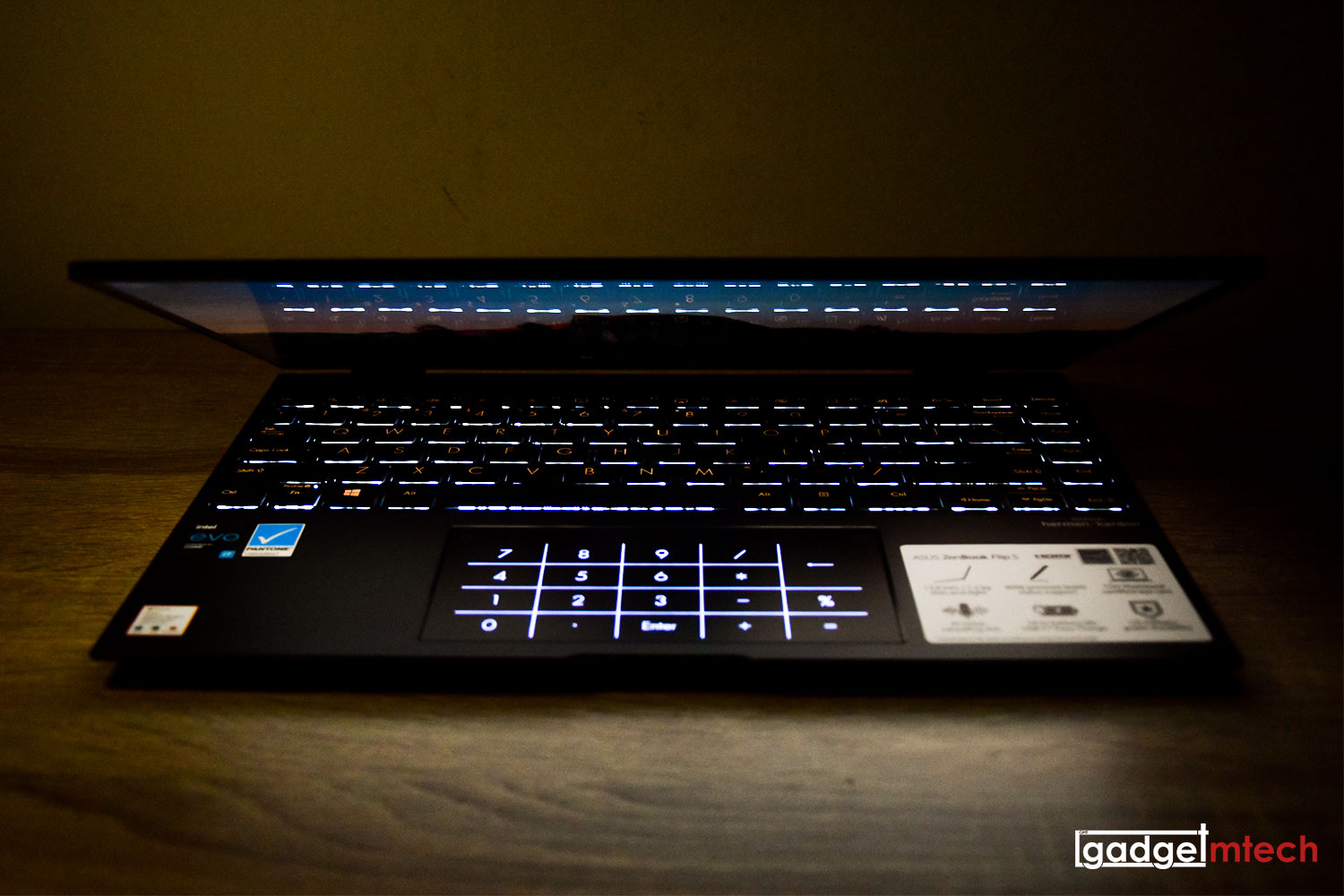
Retailing at RM6,799, the ASUS ZenBook Flip S OLED (UX371) no doubt is a premium convertible laptop. Personally, I think that it’s a little bit wasted to use a 4K panel on a 13.3-inch laptop as Full HD is actually good enough for average consumers. It has a top-notch OLED screen, better than any other laptops I’ve reviewed so far. Once again, the USB-C Easy Charge remains my favorite feature, all I need is just a USB-C cable and I’ll be able to charge all my gadgets. And with the inclusion of a stylus, this is the laptop I’ve been looking for, if only it has better thermal management so that the fan won’t need to kick in that often.
Yay
- Thin and light
- Impressive OLED display
- USB-C Easy Charge feature comes in handy to use
Nay
- No MicroSD card slot
- No 3.5mm audio jack
- Loud fan noise and fan kicks in quite frequently

